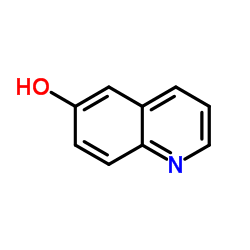Excited-state proton transfer via hydrogen-bonded acetic acid (AcOH) wire for 6-hydroxyquinoline.
Yu-Hui Liu, Mohan Singh Mehata, Jian-Yong Liu
Index: J. Phys. Chem. A 115(1) , 19-24, (2011)
Full Text: HTML
Abstract
Spectroscopic studies on excited-state proton transfer (ESPT) of hydroxyquinoline (6HQ) have been performed in a previous paper. And a hydrogen-bonded network formed between 6HQ and acetic acid (AcOH) in nonpolar solvents has been characterized. In this work, a time-dependent density functional theory (TDDFT) method at the def-TZVP/B3LYP level was employed to investigate the excited-state proton transfer via hydrogen-bonded AcOH wire for 6HQ. A hydrogen-bonded wire containing three AcOH molecules at least for connecting the phenolic and quinolinic -N- group in 6HQ has been confirmed. The excited-state proton transfer via a hydrogen-bonded wire could result in a keto tautomer of 6HQ and lead to a large Stokes shift in the emission spectra. According to the results of calculated potential energy (PE) curves along different coordinates, a stepwise excited-state proton transfer has been proposed with two steps: first, an anionic hydrogen-bonded wire is generated by the protonation of -N- group in 6HQ upon excitation to the S(1) state, which increases the proton-capture ability of the AcOH wire; then, the proton of the phenolic group transfers via the anionic hydrogen-bonded wire, by an overall "concerted" process. Additionally, the formation of the anionic hydrogen-bonded wire as a preliminary step has been confirmed by the hydrogen-bonded parameters analysis of the ESPT process of 6HQ in several protic solvents. Therefore, the formation of anionic hydrogen-bonded wire due to the protonation of the -N- group is essential to strengthen the hydrogen bonding acceptance ability and capture the phenolic proton in the 6HQ chromophore.
Related Compounds
| Structure | Name/CAS No. | Molecular Formula | Articles |
|---|---|---|---|
 |
6-Hydroxyquinoline
CAS:580-16-5 |
C9H7NO |
|
Synthesis and antimosquito properties of 2,6-substituted ben...
2013-07-01 [Eur. J. Med. Chem. 65 , 295-303, (2013)] |
|
TDDFT study of the polarity controlled ion-pair separation i...
2014-07-15 [Spectrochim. Acta. A. Mol. Biomol. Spectrosc. 128 , 280-4, (2014)] |
|
Excited-state prototropic equilibrium dynamics of 6-hydroxyq...
2010-11-08 [Chemistry 16(42) , 12609-15, (2010)] |
|
Excited state proton transfer in the Cinchona alkaloid cupre...
2010-10-21 [Phys. Chem. Chem. Phys. 12(39) , 12562-9, (2010)] |
|
Proton translocation and electronic relaxation along a hydro...
2008-07-17 [J. Phys. Chem. B 112(28) , 8383-6, (2008)] |